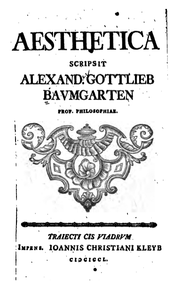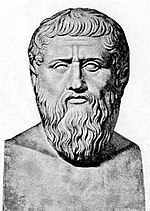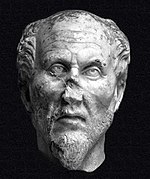Aesthetics: Definition of Aesthetic, Etymology, Semantic term, Object of aesthetics, History
AestheticS
The aesthetics in the field of philosophy relates to the emotions caused by a work (or certain gestures, attitudes, things), the judgments of the work, what is specific or unique to an expression (artistic, literary, poetic , etc..), what might be described as beautiful as opposed to the useful and functional.
The aesthetic is a discipline and philosophy with the objective perceptions, the meaning, beauty (in nature or art), or only what relates to the concept of 'art. The aesthetic is thus designated area until the eighteenth century by science or fine critical taste, and becomes since the nineteenth century philosophy of art.
The aesthetic is generally in the philosophy of knowledge, science of the sensible, what is the meaning given in intuition or vision, that is to say, in space and time as opposed to what is the intelligible, understanding or pure reason.
In common parlance, the word is synonymous with aesthetic beauty. And as the name, aesthetics is a concept denotes all the characteristics that determine the appearance of something, often synonymous with design or appearance of the human body.
Definition of Aesthetic
Etymology

First page Æsthetica, 1750
From "who has the ability to perceive or understand" aisthêsis of "feeling" formed on meaning "sense". The aesthetic philosophy "theory, not of beauty itself, but the ruling that claims accurately assess the beauty as ugliness"
But it is the German philosopher Alexander Gottlieb Baumgarten introduces the eighteenth century, the neologism "aesthetic" (in Latin: Aesthetics) and gave it its modern sense with the first volume of his Aesthetica in 1750. It defines a new philosophical discipline and independent, based initially on the Platonic and Aristotelian distinction between sensible (aisthêta) and intelligible (NOET) It replaces historically poetry initiated by Aristotle. Unlike the philosophy of art, aesthetics is not just art, but includes literature, poetry, drama.
In the book Philosophical Meditations (1735) defines aesthetics as "the science of how knowledge and exposure sensitive" and in Aesthetics (1750): "Aesthetics (or theory of liberal arts , epistemology lower art of the beauty of thinking, art of the analogue of reason) is the science of sensory knowledge
Semantic term
Historically, the term aesthetic takes a different meaning in different languages, have not been adopted to the same periods, and following the same influence of philosophical works (those of Kant and Hegel in particular). Moreover, this area of study is also known by synonyms or similar
In the English language, the field of aesthetics has traditionally been categorized in the Critic, the following Elements of Criticism (1762) the philosopher Henry Home, and is generally defined as "art critic" (critic of art). Since the 1950s, the dominant influence of analytic philosophy in the Anglo-Saxon also tends to restrict the scope of aesthetics to a single philosophy of art .
In French, this field of study was generally designated by the nineteenth century, as "theory of art" or "criticism of taste" The word aesthetics comes into the French language in the late eighteenth century and in the Dictionary of the French Academy in 1835. His first appearance in a philosophical dictionary is due to Charles Benard Magloire in 1845 Other terms remain, however, such a philosophy of beauty, taste theory, theory of Fine Arts, etc.. In France, the first chair of aesthetics is founded in 1921 at the University of the Sorbonne, for Victor Basch. The shift of the term in everyday language is recent
The term is derived: the aesthetics that characterized the assessment of human values only aesthetically (as beautiful and nice), then subsequently designates a literary and artistic movement of the English nineteenth century. The aestheticization (German: Ästhetisierung) transformation process aesthetic reality of a phenomenon initially not aesthetic. The aesthetic, in the very sensitive person. The esthetician, a philosopher specializing in the branch of aesthetics.
Object of aesthetics
In its broadest definition, aesthetics is to the perceptions sensory essence and perception of beauty, emotions and judgments related to perceptions, and the art in all its forms (music, painting, gastronomy, etc.) and all its aspects (work, creativity, etc.).
Some fundamental aspects and sometimes opposite may be particularly noticed:
Aesthetics can be a theory of beauty, who wants normative science, along with the logic (concept of truth) and moral (good idea). It is a theory of a certain type of value judgments which sets out general standards of beauty.
Aesthetics may also be a metaphysical truth, which seeks to reveal the original source of any sensible beauty: for example, the reflection of the intelligible in the subject (Plato), the manifestation of the idea (Hegel ), the will (Schopenhauer) 's being (Heidegger).
The metaphysical character of beauty is gradually replaced by a philosophy of art (Hegel), which is subject to the works done by men instead of building a priori what the beautiful. As a result, the aesthetic is like a reflection on the technical or the social conditions that are taken for "artistic" some type of action, which also reflects on the legitimacy of the concept of 'art.
History of Western aesthetics
The aesthetic, understood in its traditional sense (Kant) as the philosophical study of perceptions, emotions, beauty and art, covers an area of research as old as philosophy itself, but discipline is because modern Greeks did not distinguish something as a aesthetics in philosophy. So retrospectively that we can speak of an ancient aesthetics as a science fair or science of the sensible. The history of aesthetics is developed in parallel with the history of rationalism. It is dating the "invention" of aesthetics than half of the eighteenth century and considering the philosophy of art must await the nineteenth century (Hegel)
Ancient Aesthetics

Plato
In ancient Greece, aesthetics was closely related to the development of art, an approach whose impact reverberated down to our present era. It was organized around the artistic representations, the role of the gods of mythology, knowledge of nature, and part of mathematics. The discoveries of philosophy were treated partly in the art (eg, teaching proportions in construction), and impliquèrent a very theoretical approach to aesthetic knowledge.
The period leading aesthetic extends primarily fifth and fourth century BC, at the time of the democracy of the Greek cities, although aesthetic concepts and designations were contained in earlier times.
Homer (in the late eighth century in particular speaks of "beauty", "harmony", etc.., But without the set theory. For artistic work, he included the production of manual labor, through which a deity acting. Heraclitus of Ephesus said Beau quality hardware as true. The art would be the manifestation of a contrary agreement by an imitation of nature. Democritus sees the nature of beauty in the sensible order of symmetry and the harmony of parts to a whole. In cosmological and aesthetic representations of the Pythagoreans, principles and proportionate cash play an important role for the Harmony and Beauty.
Hellenistic Aesthetic

Aristotle
For Socrates, the beautiful and well mixed. The art is primarily representative to represent a beautiful person in body and spirit. Plato omits the sensitivity of men: the beauty in nature-natural and is designed as an idea in thought, the understanding of men . Things are only reflections of ideas, art and copy only those reflections. And he assesses particularly negative art, as a faithful copy not since done so by imperfect humans. It differs, however, two techniques of imitation: the "copy" (eikastike) such as painting or poetry, and "illusion" (Phantastik) such monumental architectural works. If Plato is favorable to the beautiful, it remains hostile to art and especially poetry and painting. His work remains as the first codification of ideological and political art.
The Greek aesthetic reaches its climax with Aristotle (384-322 BC).. In Poetics, one criticism of Plato's aesthetics by developing its own aesthetic positions based on distinctions between Greek art forms: drama, music, sculpture, painting ... (ch. 1: "The epic, tragic poetry, comedy, poetry rave, play the flute, play the zither, are all, generally imitations."). For Aristotle, art is distinguished by the objects they imitate and artistic means used to achieve this imitation. Art imitates nature or completing things that nature is unable to achieve. Aristotle's thought becomes a basis for "theories of art" later (in the modern sense) by his dialectic of knowledge and its assessment of the role of nature and appearance in artistic beauty. It implements the concepts of imitation (mimesis) of the emotion, the pleasure of the spectator (katharsis), the figures of speech or the role of the artwork. These theories will be taken to the classical aesthetic by Boileau (XVII century).
Neoplatonic Aesthetics

Plotinus
In the late antiquity, aesthetic thought is particularly systematized around the concepts of Neoplatonists Plotinus (204-270). In the Enneads, it incorporates and transcends the distinctions of Plato. The essence of beauty lies in the intelligible and more precisely in the idea. Then beauty is identified with "Unity", from which all beings. The beautiful is so spiritual nature (connected to the soul) and its contemplation is a guide for approaching the Intelligible. Also beauty is in the form of the work, not in its material. As for Plotinus, true art does not simply copy nature, but rather seeks to rise (to correct nature, being creative). Plotinus grounds the Symbolist aesthetic works and unrealistic, examples of which are the icons and Byzantine paintings and sculptures of the Romanesque.
Aesthetics Roman incorporates the concepts of antiquity, such as reflections on the relationship between nature and beauty, such as the poetics of Horace, or theories of Seneca on the beautiful.
Like it on Facebook, Tweet it or share this article on other bookmarking websites.

